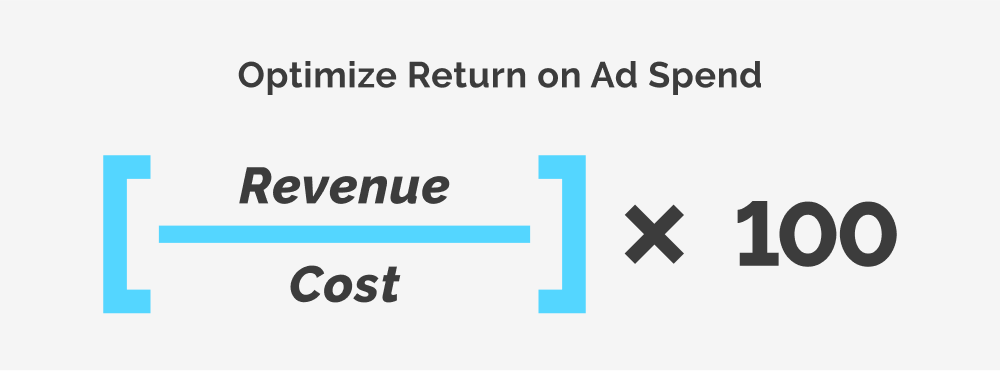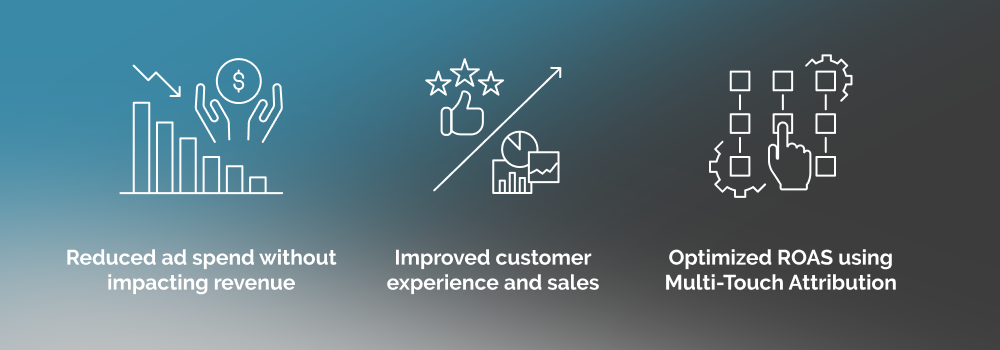MarTech, zCase Study
Boosting ROAS Using Multi-Touch Attribution (MTA) for Increased ROI
Shruti Garg | Updated: June 7, 2023
Our multinational client is an industry-leading apparel and accessories company based in California. Renowned for building inspiring brands and innovative products, they have established themselves as a pioneer in the fashion industry. However, tracking sales across their popular brands globally posed a significant challenge.
Client Background
The client is an industry leading apparel and accessories company based in California. Renowned for building inspiring brands and innovative products, they have established themselves as a pioneer in the fashion industry. However, tracking sales across their popular brands globally posed a significant challenge.
Challenges
- The client sought an impartial view of their advertising campaigns to identify successful strategies and optimize their Return On Ad Spend (ROAS).
- The bulk of the ad budget was allocated to Facebook and Google, with minimal investment in email marketing. However, with a comprehensive understanding of which platform was driving sales, it was possible to allocate resources effectively.
- Conversion pixels were being used, but the data remained siloed, making it challenging to attribute sales accurately to specific sources. The marketing team needed help to resolve conflicting claims from different vendors regarding responsibility for generating sales.
- The client hypothesized that the lack of data integration and personalized customer experiences negatively impacted sales. Unfortunately, there was no reliable way to analyze this hypothesis.
Solution Approach and Analysis
- Our team addressed the challenges by consolidating all relevant customer journey touchpoint data, including ads, website interactions, and email engagement, into a Customer Data Platform (CDP). This immediate data unification improved personalization by leveraging multi-channel insights.
- The marketing team gained real-time access to impartial attribution reports by leveraging touchpoint attribution data within the unified customer journey view. These insights enabled them to make data-driven optimization decisions promptly.
- Initially, the data favored Facebook as the most effective channel, leading the company to allocate 83% of its budget while only allocating 17% to Google. However, this skewed reach data masked the actual effectiveness of Google ads. Upon closer examination, we discovered that with lower ad spend but higher Average Order Value (AOV), Google Ads generated a greater ROAS than Facebook. This finding empowered our clients to reallocate their budget more efficiently, favoring Google.
Key Benefits
- 1. Reduced ad spend without impacting revenue: By leveraging attribution models and acting on the insights gained, the company achieved a remarkable 44% reduction in ad spending while maintaining revenue levels.
- 2. Improved customer experience and sales: Unifying data across channels significantly enhanced personalization and customer experience, resulting in better sales performance and increased customer loyalty.
- 3. Optimized ROAS using Multi-Touch Attribution: Through the implementation of MTA, the client successfully optimized their ROAS, ensuring a more efficient allocation of resources and driving better overall marketing results.
Outcomes
Our client substantially improved their marketing strategy by leveraging multi-touch attribution and data-driven insights. Trantor’s data analytics and optimization expertise played a pivotal role in helping the client reduce costs, improve customer experience, and drive exceptional ROI.





